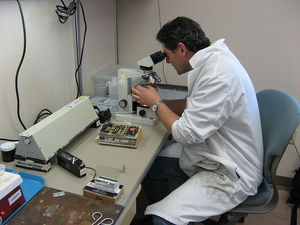There have been a number of amazing discoveries in recent years. Many are fascinating, but some may truly affect the way we live in the near future. The following finds may make it possible to cure disease, and even turn back the aging clock. Some of the best results of these finds may be far in the future, while some may be right around the corner.
Skin cells can be reprogrammed to act like embryonic stem cells
According to UCLA, In 2007, researchers discovered that skin cells could be reprogrammed to act like embryonic stem cells. It was a great discovery for people fighting against using embryonic stem cells for religious reasons. It was hoped that the reprogrammed skin cells would work better than embryonic cells, because they would have an endless supply of cells that could be coaxed into various cell types to treat many different conditions.
In 2009, the method had a possible setback, when UCLA researchers found that the reprogrammed cells are inherently different from embryonic stem cells. They didn’t know whether this was good or bad. Reprogrammed skin cells had another setback in 2011, when another study, published in Nature, found that mice rejected their reprogrammed cells.
More recently however, in March, 2012, another study, published in the Journal of Cell Science found signatures that could predict the expression of a protein that can regenerate tissue. This was the biggest step forward for reprogrammed stem cells, because it means that researchers may be able to select only the features they know will create resulting cells that will do what they intend, which could include wound healing and drug development.
Longer telomeres may make us live longer
In 2007, researchers discovered telomeres, which shield the ends of chromosomes, and seemed to have something to do with aging. The discovery was published in Nature. In 2010, Harvard scientists discovered that longer telomeres partially reversed the aging process in mice. Very little research has been done with humans in this area. Hopefully, telomere research will one day result in an anti-aging pill, but will likely happen after we have all died of old age. Isn’t that always the way it goes?
The first self-replicating, synthetic bacterial cell is created
In 2010, researchers at the J. Craig Venter Institute were able to create a completely synthetic, self-replicating cell. This discovery could help our lives in many ways. The researchers hope the cells can be used in the creation of many beneficial products, from biofuels to vaccines, and even food products. Let’s just hope it is always used for good, rather than evil.
The final draft of the human genome was completed, and we only have ¼ of the genes we thought we had
In 2004, the International Human Genome Sequencing Consortium published the final draft of the almost-complete mapping of the human genome in Nature. Many scientists initially thought we had around 100,000 genes. Their predictions were way off, however. We actually have only 20,000 to 25,000 genes. Researchers hope our understanding of the genome could lead to cures for many diseases, such as cancer and Alzheimer’s.
Heart valves can be created using bone marrow stem cells
In 2007, a British research team, led by Sir Magdi Yacoub, were able to grow a heart valve from bone marrow stem cells, according to The Gaurdian. Because the heart valve is created using the patient’s own cells, there’s less chance of rejection. Further study into these, and other related methods, have proven very successful. With heart disease being so prevalent, the possibility of growing heart parts, and even entirely new hearts, could alleviate much heartache.
